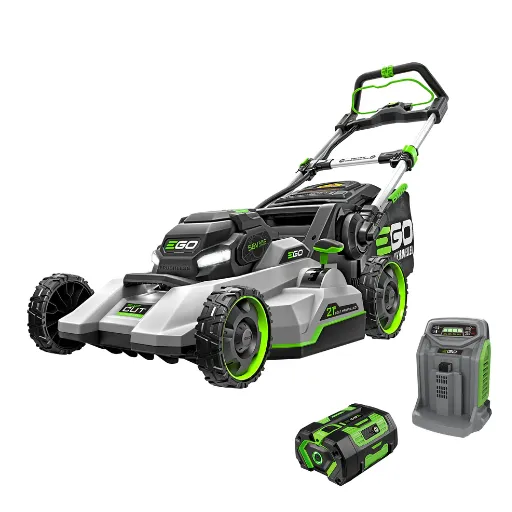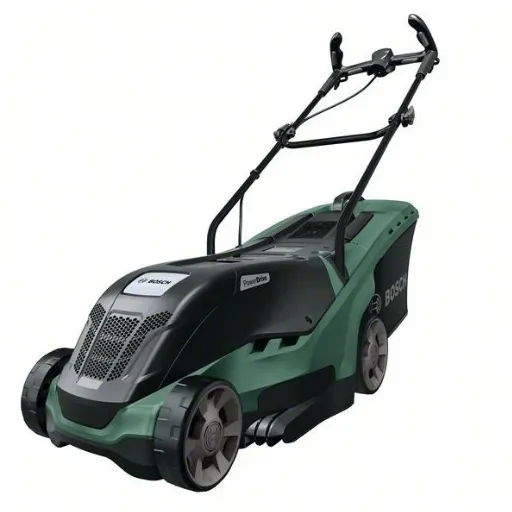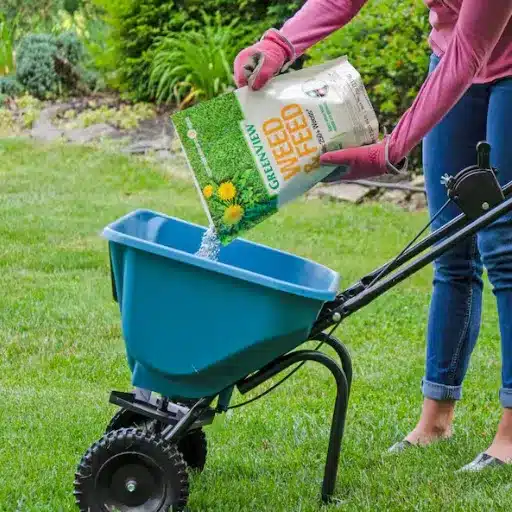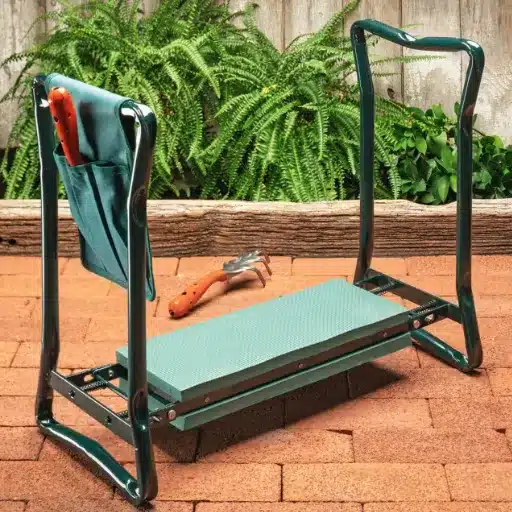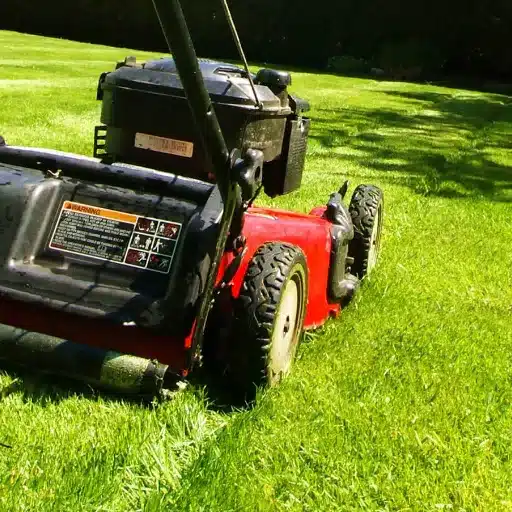Maintaining a pristine and well-groomed lawn can feel like a monumental task, especially when faced with overgrown grass, stubborn weeds, and unruly brush. That’s where the right brush cutter comes to the rescue! Designed to tackle even the toughest outdoor challenges, brush cutters offer unmatched power and versatility, transforming daunting yard work into a simple, efficient process. In this guide, we’ll explore everything you need to know about finding the best brush cutter to suit your needs. From highlighting essential features to comparing top models on the market, we’ll ensure you’re equipped with the knowledge to choose a tool that makes lawn maintenance effortless and effective.
How to Choose the Best Brush Cutter for Your Needs?

When choosing the best brush cutter for your needs, consider the following key factors:
- Type of Brush Cutter: Determine whether you need a handheld, walk-behind, or tow-behind model based on the size and terrain of your property. For smaller yards or light vegetation, handheld options work well. For thicker brush and larger areas, walk-behind or tow-behind models provide greater power and efficiency.
- Engine Power: Choose an engine with sufficient power for the job. Electric models are ideal for lighter tasks, while gas-powered options are better for dense and overgrown areas.
- Cutting Attachments: Look for brush cutters with interchangeable blades or trimmer heads to handle different types of vegetation, from grass to tough weeds and small saplings.
- Ease of Use: Pick a model with features such as ergonomic handles, adjustable shafts, and anti-vibration systems for comfort during extended use.
- Durability and Build Quality: Ensure the brush cutter is made from sturdy materials that can withstand frequent use in challenging outdoor environments.
By prioritizing these factors, you can select a reliable tool that efficiently meets your lawn care requirements.
What Features Make a Brush Cutter Stand Out?
When selecting a brush cutter, several standout features determine its efficiency, durability, and ease of use. Here’s a detailed breakdown of the most important aspects:
- Engine Power and Efficiency
A powerful engine ensures the brush cutter can handle tough vegetation, from dense grass to thick bushes. For instance, a 35cc 2-stroke engine offers a good balance of power and weight, suitable for general use, while professional-grade models may use engines exceeding 50cc for cutting through thick underbrush with ease. Additionally, modern brush cutters feature fuel-efficient engines, reducing emissions and operating costs.
- Cutting Capacity and Blade Versatility
High-quality brush cutters come equipped with a variety of cutting blade options, including metal blades, nylon trimmers, and even saw-like teeth for challenging tasks. Look for models that support multiple blade types, allowing you to switch between cutting tall grass, thin saplings, or tougher vegetation. For example, a multi-tooth blade is ideal for woody plants, while a grass blade works best for lighter vegetation.
- Ergonomic Design and Comfort
Comfort should never be overlooked, especially for prolonged use. Most competitive models now feature anti-vibration technology, padded handles, and an adjustable harness to evenly distribute weight across the body. For instance, double-handle or “bike-handle” designs improve control and reduce operator fatigue compared to traditional single-loop handles.
- Durability and Build Materials
Durability plays a pivotal role in ensuring that your brush cutter withstands frequent use in tough outdoor environments. High-quality aluminum or stainless steel shafts and heavy-duty plastic components increase the tool’s lifespan. Look for reinforced gearboxes and protective covers to safeguard essential parts from dust, debris, and mechanical wear.
- Adjustability and Maintenance Features
A standout brush cutter offers practical adjustability, such as telescopic shafts to accommodate different user heights and quick blade-changing mechanisms. Additionally, easy access to key components like air filters and spark plugs makes maintenance hassle-free, ensuring long-term reliability.
- Weight and Portability
Weight can significantly influence the ease of handling. Models around 12-15 pounds are ideal for average tasks, while heavier professional-grade units exceeding 20 pounds often include added support structures like harnesses or frame mounts to manage their weight effectively.
- Eco-Friendliness and Noise Levels
Many contemporary brush cutters include low-emission engines and quieter operation features to comply with environmental regulations and improve the user experience. Electric or battery-powered models are increasingly popular, offering silent, zero-emission performance for residential and urban use.
By combining these features, today’s brush cutters are refined tools capable of meeting the rigorous demands of homeowners and professionals alike. Whether tackling overgrown gardens or expansive fields, choosing a model tailored to your requirements ensures optimum performance and a long-lasting investment.
Comparing Gas Brush Cutter vs. Electric Brush Cutter
Gas brush cutters are powerful and suitable for heavy-duty tasks with unlimited runtime, while electric brush cutters are quieter, eco-friendly, and require less maintenance but are limited by battery life or cord length.
|
Parameter |
Gas Brush Cutter |
Electric Brush Cutter |
|---|---|---|
|
Power |
High |
Moderate |
|
Runtime |
Unlimited (refuel) |
Limited (battery/cord) |
|
Noise |
Loud |
Quiet |
|
Emissions |
High |
None |
|
Weight |
Heavy |
Lightweight |
|
Maintenance |
High |
Low |
|
Mobility |
Unlimited |
Limited (cord/battery) |
|
Cost |
Higher (fuel) |
Lower (electricity) |
|
Suitability |
Large areas, dense |
Small yards, light |
|
Ease of Use |
Moderate |
High |
What Are the Benefits of Cordless Brush Cutters?
Cordless brush cutters have garnered significant popularity due to their versatility, ease of use, and environmental benefits. One of their primary advantages is enhanced mobility. Without the need for a power outlet or restrictive cords, users can freely maneuver across large or remote areas, making them ideal for tasks in gardens, parks, or expansive properties.
Another key benefit is their lightweight, ergonomic design. Many cordless models are equipped with lithium-ion battery technology, which reduces overall weight while providing long-lasting power. For example, modern batteries can deliver up to 60 minutes of continuous operation on a single charge, depending on the model.
Additionally, cordless brush cutters operate with little to no noise, offering a quieter alternative to gas-powered tools. This feature benefits both residential users and professionals working in noise-sensitive environments. Furthermore, without relying on gasoline, cordless models are emission-free, contributing to environmental sustainability and reducing the carbon footprint associated with outdoor tasks.
Maintenance is also straightforward with cordless brush cutters. Unlike gas models, they require no fuel mixing, spark plug replacements, or engine tune-ups. Users save time and money while benefiting from a tool that’s simple to operate and maintain.
Finally, advancements in brushless motor technology have significantly improved the performance of cordless brush cutters. Brushless motors are more efficient, provide longer runtime per charge, and deliver consistent cutting power even when tackling thick brush and tall grass. Increasingly competitive pricing and accessibility make these tools an excellent choice for environmentally conscious users who prioritize convenience and efficiency.
What Are the Top Brush Cutters on the Market Today?

- Husqvarna 525RX
Known for its durability and cutting efficiency, the Husqvarna 525RX is lightweight, features adjustable handlebars for comfort, and provides excellent performance for trimming dense vegetation.
- Stihl FS 91 R
This brush cutter offers a powerful yet efficient motor, ideal for large properties or heavy-duty tasks. Its ergonomic design and reliable build make it a popular choice among professionals.
- Makita XRU15PT1 (Cordless)
A top-rated cordless option, the Makita XRU15PT1 features a brushless motor for high efficiency and quiet operation. It is perfect for environmentally conscious users looking for a lightweight and portable solution.
- Ryobi RY4CCS
Equipped with a 4-cycle engine, the Ryobi RY4CCS eliminates the need for fuel mixing while delivering steady and dependable power for tackling thick brush. It is user-friendly and budget-friendly.
- EGO Power+ STX3800 (Cordless)
This powerful battery-operated option offers commercial-grade performance with low noise levels. Its interchangeable battery system is convenient for users already in the EGO ecosystem.
These brush cutters are highly ranked for their reliability, ease of use, and ability to handle a variety of vegetation types, catering to both professional and home users.
Exploring the Best Brush Cutter Blade Options
When selecting a blade for your brush cutter, it’s essential to choose one suited to the type of vegetation you plan to tackle. Brush cutter blades vary by material, design, and purpose, offering specialized solutions for grass, dense weeds, or woody shrubs. Below are some of the top options to consider:
- 3-Tooth Grass Blade
This blade is ideal for cutting through dense grass quickly and efficiently. With its triangular design, the 3-tooth blade delivers swift, clean cuts and is perfect for landscaping tasks involving thick grass or light weeds.
- 8-Tooth or 9-Tooth Brush Blade
Designed for tougher weeds and light brush, these blades offer greater durability while maintaining precision. They are commonly used for clearing overgrown fields or gardens and can handle stems up to 0.5 inches thick.
- Carbide-Tipped Brush Blade
Featuring teeth tipped with high-strength carbide, this type of blade is excellent for heavy-duty work, such as cutting through thick brush or even small trees. The carbide tips increase longevity and provide a smoother cutting experience with fewer replacements needed over time.
- 40-Tooth or 80-Tooth Circular Brush Blade
These blades resemble circular saw blades and are built for the most challenging tasks, such as clearing dense woody growth or saplings up to several inches in diameter. They are frequently used in forestry applications due to their high cutting power and precision.
- Plastic Blades
Lightweight and safe, plastic blades are suitable for maintaining lawns or thin grass. They are ideal for residential settings where heavy-duty cutting is not required and are also more affordable compared to their metal counterparts.
Which Handheld Brush Cutters Are Highly Recommended?
When selecting the right handheld brush cutter, several models stand out due to their efficiency, durability, and advanced features. Below are some of the top-rated options to consider:
- Husqvarna 336FR
The Husqvarna 336FR is a versatile and powerful option suitable for both professional landscapers and homeowners. It comes with a 34.6cc X-Torq engine that reduces fuel consumption and emissions. This model includes a harness for comfort during extended use and offers interchangeable cutting attachments, making it ideal for tackling grass, weeds, and thicker vegetation.
– Power Output: 1.9 hp
– Weight: 15.4 lbs (with cutting equipment)
– Fuel Tank Capacity: 25 oz
Why It’s Recommended: Exceptional balance between power and usability, combined with reduced environmental impact.
- Makita 4-Stroke Brush Cutter (EBH341U)
Renowned for its efficient 4-stroke engine, the Makita EBH341U is designed for professionals seeking a quieter and more fuel-efficient brush cutter. The 33.5cc engine eliminates the need for a fuel-oil mix, making it easier to operate. It also comes with an ergonomic handle and a rigid clutch case for increased durability.
– Power Output: 1.07 hp
– Weight: 12.1 lbs
– Fuel Tank Capacity: 24 oz
Why It’s Recommended: Quiet and eco-friendly operation with long-term reliability in demanding conditions.
- Stihl FS 131
The Stihl FS 131 is a high-performance brush cutter capable of handling overgrown areas and woody vegetation. Its 36.3cc engine is built for efficiency and durability, while the multi-function control handle ensures ease of use. This model also features an anti-vibration system, reducing user fatigue during prolonged tasks.
– Power Output: 1.9 hp
– Weight: 12.3 lbs
– Fuel Tank Capacity: 24 oz
Why It’s Recommended: Ideal for heavy-duty applications without compromising on operator comfort.
- Echo SRM-2620T
The Echo SRM-2620T stands out for its ergonomic design and enhanced torque, making it excellent for cutting through tough grass and light brush. Its 25.4cc professional-grade 2-stroke engine delivers consistent performance, while the Speed-Feed 400 cutting head ensures quick reloading.
– Power Output: 1.35 hp
– Weight: 12.3 lbs
– Fuel Tank Capacity: 21.6 oz
Why It’s Recommended: A combination of power, convenience, and reliability for routine maintenance tasks.
Each of these brush cutters excels in delivering high-quality performance tailored to various needs, from residential lawn care to heavy-duty clearing tasks. Consider factors such as engine type, weight, and intended use when selecting the best model for your requirements.
What Are the Leading Brands in Brush Cutting?
When it comes to brush cutters, some leading brands stand out for their innovation, performance, and durability. Here are the top contenders and an overview of what makes them industry leaders:
- Stihl
Stihl is renowned for its high-performance outdoor power tools, including brush cutters. The brand offers models equipped with advanced anti-vibration technology and efficient fuel consumption. Many professionals trust Stihl for its reliability and robust construction, with weight options ranging from lightweight designs for residential use to heavy-duty models for commercial applications.
- Husqvarna
Husqvarna’s brush cutters are celebrated for their ergonomic designs and powerful two-stroke and four-stroke engine options. These tools often come with intuitive controls and harnesses for enhanced user comfort during long use periods. Additionally, Husqvarna is praised for its range of models tailored for everything from light trimming to tackling dense vegetation.
- Makita
Known for combining power with environmentally friendly design, Makita brush cutters often feature high-torque motors and lower emissions. Makita also offers cordless brush cutter options with lithium-ion batteries, ideal for users prioritizing mobility and reduced noise levels.
- Echo
Echo delivers brush cutters that are both powerful and easy to maintain. The brand’s two-stroke engines are designed for maximum cutting performance with minimal downtime. Echo is particularly favored for its diverse range of attachments, which enhance the tool’s versatility.
- Ryobi
With a reputation for affordability and user-friendly features, Ryobi brush cutters are a popular choice among homeowners. Many models include adjustable handles, lightweight builds, and compatibility with Ryobi’s extensive battery system for cordless convenience.
- Honda
Honda brings its expertise in engine technology to its brush cutters, delivering durable four-stroke engines with excellent fuel efficiency and reduced noise output. These brush cutters are a top choice for those seeking reliable and eco-friendly performance.
Each of these brands offers a variety of options tailored to specific needs, whether tackling light trimming jobs or managing tough, overgrown areas. When choosing a brush cutter, consider factors such as engine type, functionality, comfort, and the brand’s service network to ensure a long-lasting and effective tool for your tasks.
How to Maintain and Sharpen Your Brush Cutter Blade?

Proper maintenance and sharpening of your brush cutter blade are essential for optimal performance and durability. Follow these simple steps:
- Clean the Blade – Before sharpening, ensure the blade is free from dirt, debris, and plant residue. Use a stiff brush or cloth with soapy water, and allow the blade to dry thoroughly.
- Inspect for Damage – Check the blade for signs of cracks, dents, or excessive wear. Replace it if significant damage is detected to maintain safety and efficiency.
- Sharpen the Blade – Secure the blade firmly in place using a clamp or vice. Use a mill file or sharpening stone to follow the blade’s original edge angle, maintaining consistent strokes for a uniform edge. Sharpen only the cutting side.
- Balance the Blade – After sharpening, ensure the blade remains balanced by hanging it on a nail or similar object. Adjust if it tilts to one side by removing a small amount of material from the heavier side.
- Lubricate and Reattach – Apply a thin layer of oil to prevent rust. Once the blade is ready, securely reattach it to the brush cutter according to the manufacturer’s instructions.
How Often Should You Sharpen Your Brush Cutter?
The frequency of sharpening your brush cutter blade depends on usage and the type of vegetation being tackled. For regular use on tough plants or dense brush, it’s recommended to sharpen the blade after every 6 to 8 hours of operation to maintain peak performance. Lighter use, such as cutting grass or softer vegetation, may only require sharpening after approximately 10 to 15 hours. Inspect the blade regularly—visible nicks, dull edges, or difficulty cutting efficiently are clear signs it’s time for sharpening. According to the latest search data, keeping tools sharp not only improves cutting efficiency but also reduces wear and tear on the machine. Proactivity in maintenance ensures optimal results and extends the lifespan of your equipment.
What Tools Are Needed for Blade Sharpening?
To achieve precise and effective blade sharpening, a range of tools and equipment is required. Here are the essential items you’ll need:
- Bench Grinder or Angle Grinder
A bench grinder or angle grinder is a key tool for sharpening blades efficiently. According to recent industry reports, using a grinder with a proper grit wheel ensures a consistent edge while preventing overheating, which could damage the blade.
- Sharpening Stones
Sharpening stones, such as water stones or diamond stones, provide a finer finishing touch to the blade. They are widely recommended for achieving sharpness with better control. Coarse grit stones are ideal for initial sharpening, while fine grit stones are used for polishing the edge.
- File
A mill file or flat file is an inexpensive and effective tool for manual sharpening, especially for lawnmower blades or garden shears. With sizes ranging from 8 to 12 inches, files are suitable for removing minor nicks and maintaining edge symmetry.
- Blade Balancer
A blade balancer is essential for ensuring the blade remains perfectly balanced after sharpening. Imbalances can lead to excessive vibration and reduced efficiency, as highlighted by equipment maintenance studies.
- Protective Gear
Safety is paramount when sharpening blades. Professionals advise using safety gloves, goggles, and ear protection to safeguard yourself from flying debris or accidents.
- Clamp or Vise
To secure the blade during sharpening, a clamp or bench vise is indispensable. This tool stabilizes the blade, allowing for precise and even sharpening without slipping.
- Lubricant or Honing Oil
Lubricants or honing oils minimize friction and keep the sharpening surface smooth. Using oil with sharpening stones helps to prolong their life and enhances blade accuracy.
- Sandpaper or Buffing Wheel
For a polished finish, sandpaper or a buffing wheel can be used to smoothen rough edges after sharpening. This step provides a sleek and professional-grade outcome.
Equipping yourself with these tools ensures an efficient blade sharpening process, enhancing both precision and longevity. Leveraging the right equipment is a key step in maintaining cutting-edge performance for any blade.
Common Mistakes to Avoid When Sharpening Blades
- Using the Wrong Angle
One of the most frequent errors is failing to maintain the correct sharpening angle. For instance, kitchen knives often require a 15-20 degree angle, whereas outdoor and utility knives may need a 20-25 degree angle. Sharpening at the wrong angle can weaken the blade’s edge or create uneven sharpness.
- Applying Excessive Pressure
Pressing too hard while sharpening can damage the blade or the sharpening tool itself. Studies indicate that consistent, moderate pressure yields the best results and preserves the metal’s integrity.
- Skipping Lubrication
Many sharpening stones require the use of oil or water to reduce friction and prevent overheating. Neglecting lubrication can lead to uneven sharpening and unnecessary wear on both the blade and the stone.
- Sharpening Too Frequently
Over-sharpening can prematurely wear down the blade, shortening its lifespan. Experts recommend only sharpening when the blade noticeably dulls, rather than after every use, which avoids unnecessary material loss.
- Ignoring Burr Removal
After sharpening, a thin metallic burr forms along the edge of the blade. Failing to remove this burr can lead to suboptimal cutting performance. Careful stropping or polishing eliminates the burr, leaving a clean, sharp edge.
- Skipping Regular Maintenance
Sharpening is not the only part of blade care. Failing to store blades properly or neglecting regular cleaning can undermine the results of sharpening. Ensuring the blade is clean and dry after use prevents rust and extends its overall longevity.
By paying attention to these common mistakes and utilizing proper techniques, it is possible to enhance both the sharpness and lifespan of your blades, ensuring they remain reliable tools for years to come.
What Attachments Can Enhance Your Brush Cutter’s Performance?

Brush cutters can be equipped with a variety of attachments to improve their versatility and performance. Some of the most effective options include:
- Blades for Dense Vegetation: Choosing specialized metal blades allows your brush cutter to handle thick grass, small saplings, and tough weeds with ease.
- String Trimmer Heads: For lighter tasks, a string trimmer head is ideal for edging lawns and cutting softer vegetation.
- Harnesses: A high-quality harness can distribute the weight of the machine, reducing user fatigue and increasing control during prolonged use.
- Debris Guards: These protect against flying debris, ensuring safer operation while maintaining cutting efficiency.
- Extension Shafts: An extension shaft can provide extra reach, making it effortless to trim hard-to-access areas like under bushes or along slopes.
Investing in these attachments tailored to your specific cutting needs will significantly enhance the efficiency, safety, and versatility of your brush cutter.
Types of Brush Cutter Attachments Available
Brush cutter attachments are designed to cater to a wide range of landscaping and maintenance tasks. Below is a detailed list of the most common and versatile options available:
- Blade Attachments
These include metal blades that are ideal for cutting through thick grass, dense brush, and even small saplings. Blades come in various shapes, such as three-tooth, four-tooth, and circular saw-style, to handle specific cutting tasks.
- Grass Trimmer Heads
Nylon line or string trimmer heads are perfect for lighter tasks like trimming grass and weeds in lawns or gardens. They offer flexibility and reduce the risk of damaging nearby structures.
- Hedge Trimmer Attachments
These are designed to shape and maintain hedges and shrubs with precision. They often include adjustable angles for easier trimming at difficult angles.
- Pruning Saw Attachments
Equipped with a compact saw blade, these attachments are excellent for pruning tree branches and tackling overgrown vegetation.
- Brush Blades with Chainsaw Teeth
For extremely demanding jobs, brush blades with built-in chainsaw teeth can cut through thick branches and heavy wooden material efficiently.
- Cultivator Attachments
These help to aerate and turn soil, making them useful for preparing garden beds or maintaining small agricultural plots.
- Edger Attachments
Perfect for achieving clean and defined edges along walkways, driveways, or garden borders, these attachments provide a polished look to landscaped areas.
- Weeding Heads
Designed to remove weeds effectively without damaging surrounding plants, these attachments are suitable for fine gardening tasks.
- Power Broom Attachments
These rotary brooms are ideal for sweeping debris such as leaves, sand, or snow, adding a different dimension of usability to brush cutters.
- Chainsaw Pole Attachments
A specialized cutting attachment for safely tackling high branches and taller vegetation using an extended reach.
Selecting the right brush cutter attachment depends on the demands of your project, terrain, and vegetation type. Having a variety of attachments ensures that your brush cutter functions as a versatile, all-in-one tool for diverse landscaping needs.
How to Use a Trimmer Head for Versatile Trimming
Using a trimmer head for versatile trimming is straightforward once you get the hang of it. First, I make sure the trimmer head is securely attached to the brush cutter. Then, I inspect the line or blade to ensure it’s in good condition. I adjust the cutting height and angle based on the type of vegetation I’m trimming—lower for grass and higher for thicker weeds. While operating, I maintain a steady motion, carefully following the shape and contours of the area to achieve an even trim. Safety always comes first, so I wear protective gear and keep a firm grip on the tool at all times.
Benefits of Using a Circular Saw Blade Attachment
Using a circular saw blade attachment on a brush cutter offers several advantages that make tough jobs more manageable. I find it particularly effective for cutting through thick vegetation, small trees, and stubborn shrubs that a standard line trimmer can’t handle. The blade’s precision allows me to work quickly and efficiently, reducing the time and effort needed for challenging tasks. Additionally, the durability of the blade means I don’t have to replace it as frequently, saving me both money and hassle in the long run.
How Does a Brush Cutter Compare with Other Trimmers?

The most powerful, versatile, and heavy-duty type of trimmer is a brush cutter. It differs from other trimmers in that a standard line trimmer is designed for light grass and weeds while a brush cutter can clear thick brush, small trees, and dense undergrowth. Unlike standard trimmers, brush cutters are equipped with blades rather than nylon lines. This allows them to cut with much greater precision and tackle challenging tasks. Brush cutters excel in rough, uneven, and overgrown terrains while standard trimmers are best for routine lawn care.
Differences Between a Brush Cutter and a String Trimmer
Brush cutters are powerful tools with metal blades for heavy-duty tasks like cutting dense vegetation and small trees, while string trimmers are lightweight, using nylon lines for precise trimming of grass and edges.
|
Parameter |
Brush Cutter |
String Trimmer |
|---|---|---|
|
Purpose |
Heavy-duty tasks |
Light trimming |
|
Cutting Tool |
Metal blades |
Nylon line |
|
Power |
High |
Moderate |
|
Versatility |
Multi-functional |
Limited |
|
Weight |
Heavier |
Lightweight |
|
Precision |
Moderate |
High |
|
Vegetation |
Dense/weedy areas |
Grass/edges |
|
Cost |
Higher |
Lower |
|
Ease of Use |
Requires skill |
User-friendly |
|
Durability |
Long-lasting |
Frequent line replacement |
When to Use a Weed Wacker vs. a Brush Cutter?
Choosing between a weed wacker (string trimmer) and a brush cutter largely depends on the type of job, terrain, and vegetation you’re dealing with. Weed wackers are best suited for lighter tasks, such as maintaining lawn edges, trimming grass around flower beds, and tackling soft weeds. Their lightweight design and nylon string make them highly maneuverable, ideal for small gardens and yards that require regular upkeep.
On the other hand, brush cutters are designed for heavy-duty applications. They excel in clearing thick brush, saplings, and overgrown areas with tougher vegetation. Equipped with a metal blade and a more robust engine, brush cutters can easily handle dense undergrowth or areas where a standard string trimmer would struggle. For example, landowners managing a property with uneven terrain, large weeds, or overgrown paths will find brush cutters indispensable.
The efficiency of these tools also differs in terms of time and energy consumption. Weed wackers, being lighter and less powerful, are energy-efficient and perfect for smaller maintenance jobs that don’t require extensive effort. Brush cutters, however, deliver far greater power, making them more suited to large-scale projects or neglected spaces where intense clearing is required.
Data from industry testing shows that a string trimmer can effectively handle vegetation up to 2 inches in height, while brush cutters can tackle growth above 4 inches, including woody stems up to 1 to 2 inches thick. For large-scale land management tasks, professionals often recommend using brush cutters to save time and minimize wear-and-tear on lighter equipment. By selecting the right tool for your specific needs, you’ll ensure both efficient performance and a well-maintained landscape.
Advantages of a Heavy-Duty Brush Cutter Over a Lawn Mower
- Versatility in Handling Tough Vegetation
Unlike a standard lawn mower, which is designed primarily for cutting grass, a heavy-duty brush cutter excels at managing a wide variety of vegetation. It can cut through dense brush, tall weeds, saplings, and even woody stems with ease. This makes it an ideal choice for clearing overgrown areas or maintaining rugged terrain that would quickly overwhelm a lawn mower.
- Enhanced Durability and Power
Heavy-duty brush cutters typically feature more robust engines and cutting mechanisms compared to regular lawn mowers. With cutting blade thickness ranging between 0.2 to 0.5 inches and rotational speeds often exceeding 3000 RPM, these machines are designed to withstand heavy workloads without frequent damage or maintenance.
- Efficiency in Large-Scale Projects
Equipped with advanced features such as wider cutting paths (up to 26 inches or more) and higher torque engines, brush cutters significantly reduce the time required for large-scale land clearing. Some models can effectively clear up to an acre in under two hours, a feat difficult to achieve with a traditional mower.
- Ability to Work on Uneven Terrain
Brush cutters are built to handle challenging terrains, including rocky hillsides, uneven ground, and areas littered with debris. With reinforced decks and adjustable cutting heights, they ensure precise performance where lawn mowers are impractical or prone to damage.
- Long-Term Cost Efficiency
While the initial investment in a heavy-duty brush cutter might be higher than a lawn mower, the benefits in terms of durability, minimized maintenance needs, and versatile functionality often result in lower long-term costs. Additionally, users save money by avoiding the need for multiple tools for different clearing tasks.
Reference Sources
- Brushwood cutter modernization – A study discussing advancements in brush cutter technology.
- Brush Clearing Tool–Trimmer Assembly – A detailed analysis of brush cutter designs and their applications.
- Production rates for United States Forest Service brush disposal planning – A guide by the U.S. Forest Service on brush disposal, including tools like brush cutters.
Frequently Asked Questions (FAQs)
Q: What is a brush cutter and how does it differ from a weed eater?
A: A brush cutter is a powerful machine designed for heavy duty tasks like clearing underbrush, cutting brush, and dealing with tougher vegetation that a regular weed eater or grass trimmer cannot handle. Unlike a standard weed eater, which uses a trimmer line, a brush cutter often features a steel blade or metal blade to cut through thicker materials.
Q: Can a brush cutter be used like a string trimmer for mowing lawns?
A: While a brush cutter is primarily designed for cutting thicker vegetation, it can be used like a string trimmer to mow lawns by switching to a cutting string or trimmer line attachment. However, for regular lawn mowing, a standard lawn mower or electric string trimmer may be more efficient.
Q: What types of blades are available for brush cutters?
A: Brush cutters can utilize various types of blades, such as circular brush blades, steel blades, carbide-tipped blades, and chainsaw brush cutter blades. The choice of blade depends on the specific task at hand, whether it’s cutting grass, clearing brambles, or trimming trees and shrubs.
Q: How does a cordless string trimmer compare to a heavy duty brush cutter?
A: A cordless string trimmer is generally used for lighter tasks like trimming grass and weeds along edges and small areas. In contrast, a heavy duty brush cutter is designed for more demanding tasks, offering more power to cut through dense brush and undergrowth.
Q: What is the benefit of using a brush cutter with a straight shaft?
A: A brush cutter with a straight shaft provides better reach and control, especially when cutting under fences, around trees, and in tight spaces. It is ideal for professional use and tackling tough outdoor power equipment tasks.
Q: Can a brush cutter be used for clearing underbrush and brambles?
A: Yes, a brush cutter is highly effective for clearing underbrush and brambles. With the appropriate blade, such as a brush saw or clearing saw, it can cut through thick vegetation and dense areas efficiently.
Q: What is the advantage of a 4 stroke engine in a brush cutter?
A: A 4 stroke engine in a brush cutter offers several advantages, including better fuel efficiency, reduced emissions, and quieter operation compared to a 2 stroke engine. It delivers consistent power to cut through tough vegetation and is often preferred for prolonged use.
Q: How does the rpm affect the cutting power of a brush cutter?
A: The rpm (revolutions per minute) of a brush cutter affects its cutting power. Higher rpm provides more power to cut through thick and stubborn vegetation. It’s important to choose a brush cutter with the appropriate rpm for the specific task at hand to ensure efficient cutting.
Q: What safety features should I look for in a brush cutter?
A: When selecting a brush cutter, look for safety features such as a blade guard to protect against flying debris, a throttle lock to prevent accidental starts, and anti-vibration handles for better control and comfort. These features help ensure safe and effective operation.
Q: Can a brush cutter be converted into other outdoor power equipment tools?
A: Yes, many brush cutters come with interchangeable attachments, allowing them to be converted into other tools such as a pole saw, hedge trimmer, or even a chainsaw brush cutter. This versatility makes them a valuable addition to any set of hand tools for comprehensive lawn maintenance.



